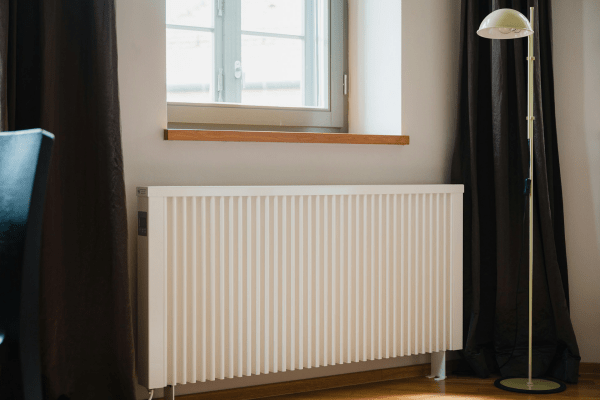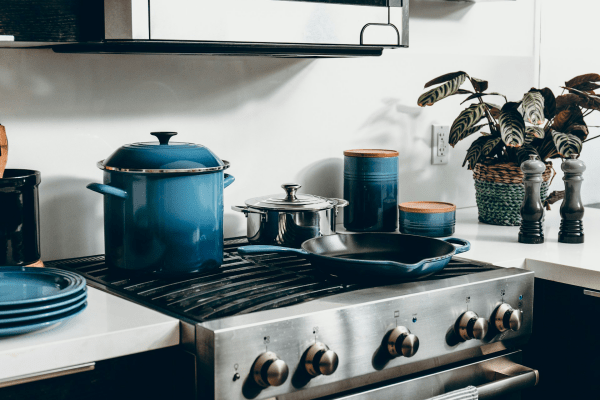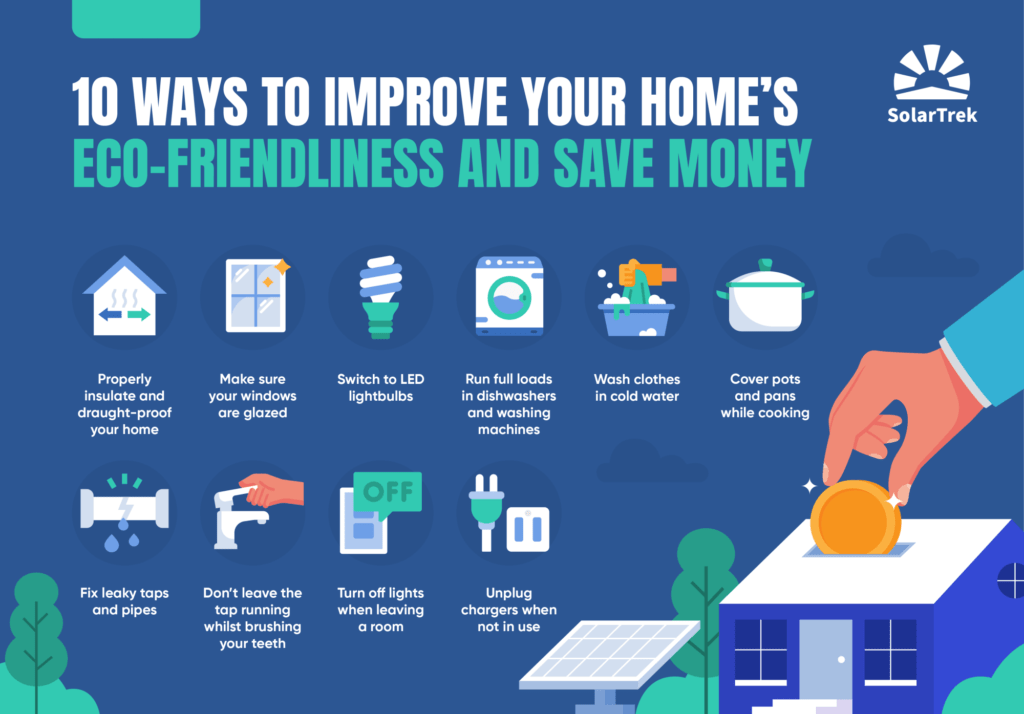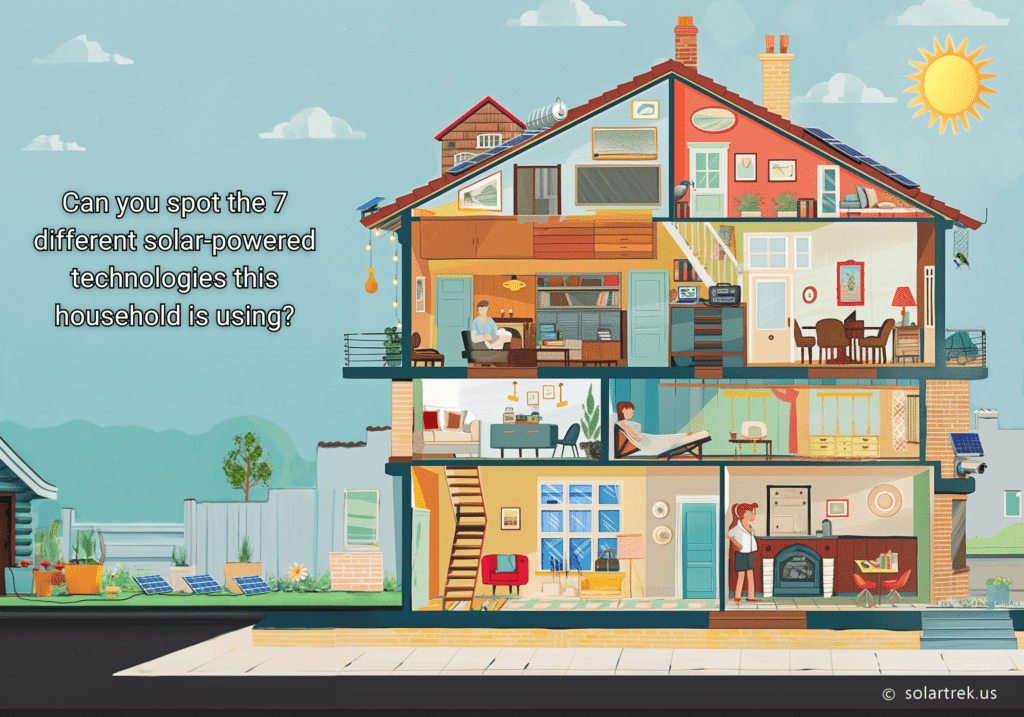Want to make your home greener and save money too? Take our quick quiz to discover how eco-friendly your home really is.
Take the quiz:

Time’s up
Helpful tips for an eco-friendly home:
Making your home more eco-friendly doesn’t just benefit the planet – it can also lead to substantial savings on your energy bills. By implementing green practices and upgrades in your home, you can reduce energy consumption, lower utility costs, and increase the overall value of your property.
Here are some practical tips to help you enhance your home’s energy efficiency and environmental friendliness:
- Properly insulate your home: Good insulation keeps your home warm in the winter and cool in the summer, reducing the need for excessive heating or air conditioning. Check if your walls, roof, and floors are well-insulated. Older homes might need updated insulation to improve energy retention and cut down on utility bills.
- Make sure your windows are glazed: Upgrading to double or triple-glazed windows can prevent heat loss and contribute to a comfortable indoor climate year-round. If replacing windows isn’t an option right now, you can also use heavy curtains during colder months to help keep heat in (also reducing the reliance on space heaters).

- Draught-proof doors and windows: Simple fixes like sealing gaps around doors, windows, and any openings can make a big difference. These measures prevent cold winds from entering and warm air from escaping, making your heating system more efficient. These don’t have to be permanent fixtures – you can just use a draught excluder to cover the gap underneath your front door.
- Choose energy-efficient appliances: Look out for energy efficiency ratings when purchasing new or replacement appliances. Appliances with an efficiency rating of ‘A’ help reduce household energy consumption and are kinder to the environment.
- Switch to LED lightbulbs: LED bulbs are more energy-efficient than traditional bulbs, using less power and lasting longer. Replacing all your home’s lighting with LEDs can cut down your energy costs and is an easy step towards a greener (and brighter!) home.
- Ditch your old boiler: Consider replacing old boilers or heaters with more efficient models like heat pumps, which use less energy to generate the same amount of heat. Although the initial cost may be higher, the long-term savings and environmental benefits are substantial.

- Use renewable energy solutions: Consider installing solar panels or a solar water heater to generate electricity cleanly and self-sufficiently. If solar panels aren’t a feasible option, look into switching to a green energy plan from your utility provider to ensure your power comes from renewable sources.
- Reduce your water waste: Fix leaky taps and install water-efficient fixtures to cut down on water waste.
- Run full loads in dishwashers and washing machines: Maximize the efficiency of your appliances by only running them with full loads, which reduces water and energy usage over time.
- Wash clothes in cold water: Opting for cold water in laundry cycles can significantly lower energy use, as the majority of the energy for washing clothes goes into heating the water.
- Use smart cooking methods: Utilise energy-efficient cooking appliances, like microwaves or convection ovens, which use less energy than traditional ovens. Planning your meals to use these appliances can lower energy consumption significantly.
- Cover pots and pans while cooking: Using lids on pots and pans traps heat, speeding up cooking and using less energy.

- Install a smart thermostat: Installing a programmable thermostat can help manage your heating and cooling systems efficiently. By setting your thermostat to lower the temperature automatically at night or when you’re not home, you can significantly reduce energy usage.
- Consider your home’s EPC rating: Your home’s Energy Performance Certificate (EPC) rates from A (most efficient) to G. Improving this rating through better insulation and efficient heating can enhance property value as well as cut emissions.
- Check your appliances: You can reduce energy waste by making sure your home appliances are still efficient. Regular upkeep, such as cleaning refrigerator coils, can boost appliance efficiency by up to 30%.
- Make behavioral changes: Simple actions like unplugging chargers when not in use, reducing shower times, not having the tap running whilst brushing your teeth, and turning off lights when leaving a room can significantly lower energy consumption and costs.

Did you know? Interesting facts and figures:
- Buildings in the UK account for about a fifth of the country’s carbon emissions.¹
- An uninsulated home can lose about a third of its heat through the walls, a quarter through the roof, 15% through the floor, and the rest through the windows.¹
- Draught-proofing your home could save £90-£155 per year by sealing leaks around windows and doors.¹
- Owners of new build homes can save an average of £184 a month on energy bills compared to older properties – that’s £2,208 a year!²
- The typical cost of installing a heat pump is around £14,000, but homeowners in England and Wales can receive subsidies of £7,500 to help with the installation.³
- Appliances like fridges and freezers can account for about 13% of the average household’s energy bill – compared to 5% on lighting.³
- Replacing all bulbs in the home with LED lights could reduce CO₂ emissions by up to 50kg a year – the equivalent of driving a car for about 145 miles.⁴
Sources: ¹BBC News, ²New Homes, ³Energy Saving Trust, ⁴Savage Lighting
Try our 'Spot the Solar' challenge:
Did you know that there’s more to solar power than just standard roof-mounted panels? There are many different ways of integrating solar power into your household. See if you can spot some of them in our challenge below:
For the answers, visit the full article.
For further reading, you may find the following articles useful:







